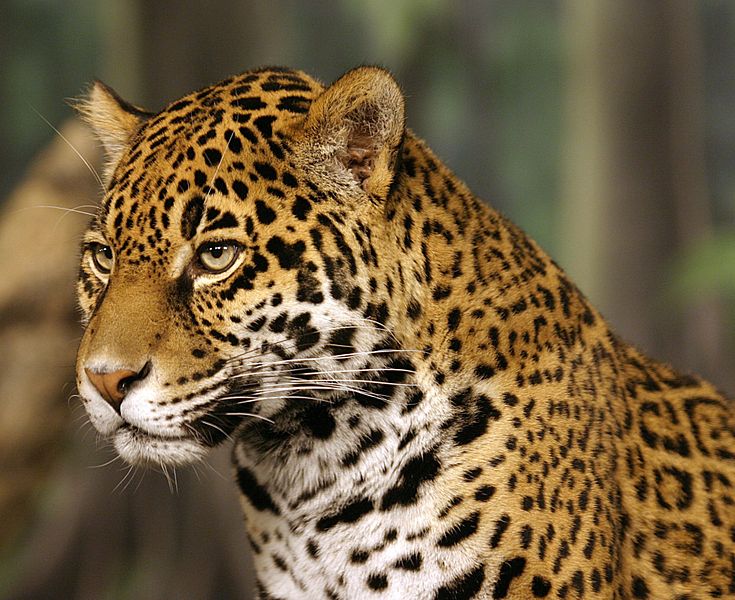Covering genealogy, family history, historical events and places, and anything else related!
Thursday, March 3, 2016
World Wildlife Day
On 30 December 2013, the United Nations General Assembly proclaimed March 3 World Wildlife Day. The date was chosen because the Convention on International Trade in Endangered Species of Wild Fauna and Flora (CITES) was signed on 3 March 1973. It is a celebration of wildlife and a way to raise awareness about wild plants and animals.
The theme for 2016 is "The future of wildlife is in our hands." Many wildlife species are threatened or endangered. Some of the causes are habitat loss, poaching, wildlife trafficking, and pollution.
Some species that my ancestors must have been familiar with are now extinct. The same fate could befall others. I would like to raise awareness of some species that can be found in locations that are connected to my family.
Karner blue butterfly. John and Karen Hollingsworth, U.S. Fish and Wildlife Service. Public domain. Available from Wikimedia Commons and Public Domain Images.
The Karner blue butterfly (Lycaeides melissa samuelis) used to be found from Maine and New Jersey westward to Minnesota and Iowa. It is now endangered. Wisconsin has the largest number of Karner blue butterflies.The species can also be found in Minnesota, Michigan, Indiana, New York, New Hampshire, Ohio, and possibly Illinois. Habitat loss is a major reason for the decline in their population size. Because they are rare, they are sought after by butterfly collectors; taking even a few butterflies could be problematic for the population.
Bluemask darter. Photo by By Dick Biggins, U.S. Fish and Wildlife Service. Public domain. Available from Wikimedia Commons.
The bluemask darter (Etheostoma akatulo) is an endangered fish that is found in the Caney Fork River system in Tennessee. Males of breeding age have blue pigment on the tower face and head. There are only four isolated populations of the species. The largest population is in the Collins River.
Aquatic warbler. Photo by sébastien bertru (Flickr: IMG_6298) [CC BY-SA 2.0 (http://creativecommons.org/licenses/by-sa/2.0)]. Available from Wikimedia Commons.
The aquatic warbler (Acrocephalus paludicola) is the only globally threatened bird of the order Passeriformes which can be found in continental Europe. It is considered endangered in Europe. The aquatic warbler breeds in Belarus, Germany, Hungary, Lithuania, Poland, and Ukraine. The populations are fragmented as a result oh habitat loss.
Ursus maritimus on sea ice close to Svalbard. 5 August 1991. Photo by Hannes Grobe, Alfred Wegener Institute for Polar and Marine Research, Bremerhaven, Germany (own work, POLARSTERN expedition ARK-VIII/2) [GFDL (http://www.gnu.org/copyleft/fdl.html), CC-BY-SA-3.0 (http://creativecommons.org/licenses/by-sa/3.0/) or CC BY 2.5 (http://creativecommons.org/licenses/by/2.5)]. Available from Wikimedia Commons.
The polar bear (Ursus maritimus) is found in the Arctic Circle. It resides in Alaska, Canada, Greenland, Russia, and the Norwegian archipelago Svalbard. It is a vulnerable species. The biggest threat faced by polar bears is habitat loss as a result of climate change. Pollution is another problem.
Jaguar, Milwaukee Zoological Gardens, Milwaukee, Wisconsin. Photo by Cburnett (Own work) [GFDL (http://www.gnu.org/copyleft/fdl.html) or CC-BY-SA-3.0 (http://creativecommons.org/licenses/by-sa/3.0/)]. Available from Wikimedia Commons.
The jaguar (Panthera onca) is nearly locally extinct in the southwestern United States. It is a near threatened species in the rest of its range, which includes Mexico, Central America, and parts of South America. It can be found in Peru, where my sister-in-law comes from. Jaguars are threatened by deforestation, hurricanes, and poaching. Ranchers also shoot them when they prey on cattle.
References
The Aquatic Warbler: Situation and Range
The Aquatic Warbler: Species
Bluemask darter
Convention on International Trade in Endangered Species of Wild Fauna and Flora (CITES)
Etheostoma akatulo (Bluemask Darter) | Tennessee Aquarium Conservation Institute Freshwater Information Network
Jaguar
Karner Blue Butterfly Fact Sheet - NYS Dept. of Environmental Conservation
Minnesota Department of Natural Resources: Rare Species Guide: Karner Blue
Official website of UN World Wildlife Day
Polar bear
U.S. Fish and Wildlife Service - Karner Blue Butterfly Fact Sheet
World Wildlife Day: 3 March
Subscribe to:
Post Comments (Atom)







No comments:
Post a Comment